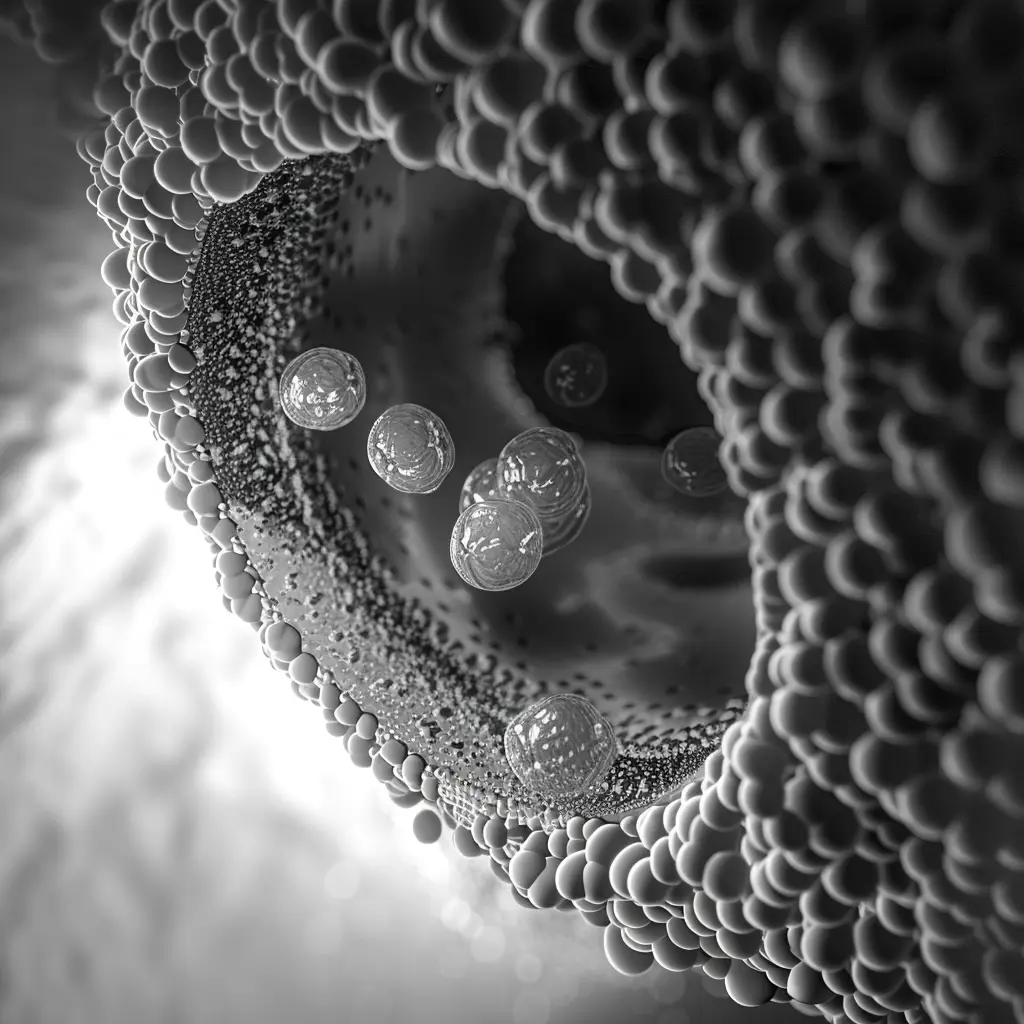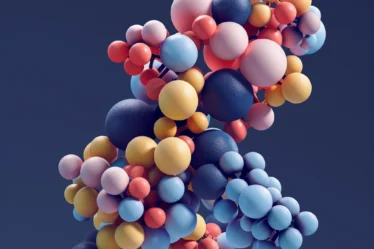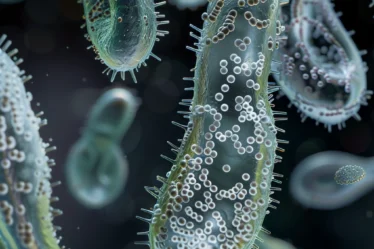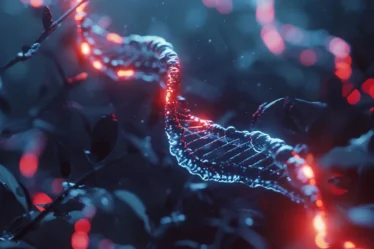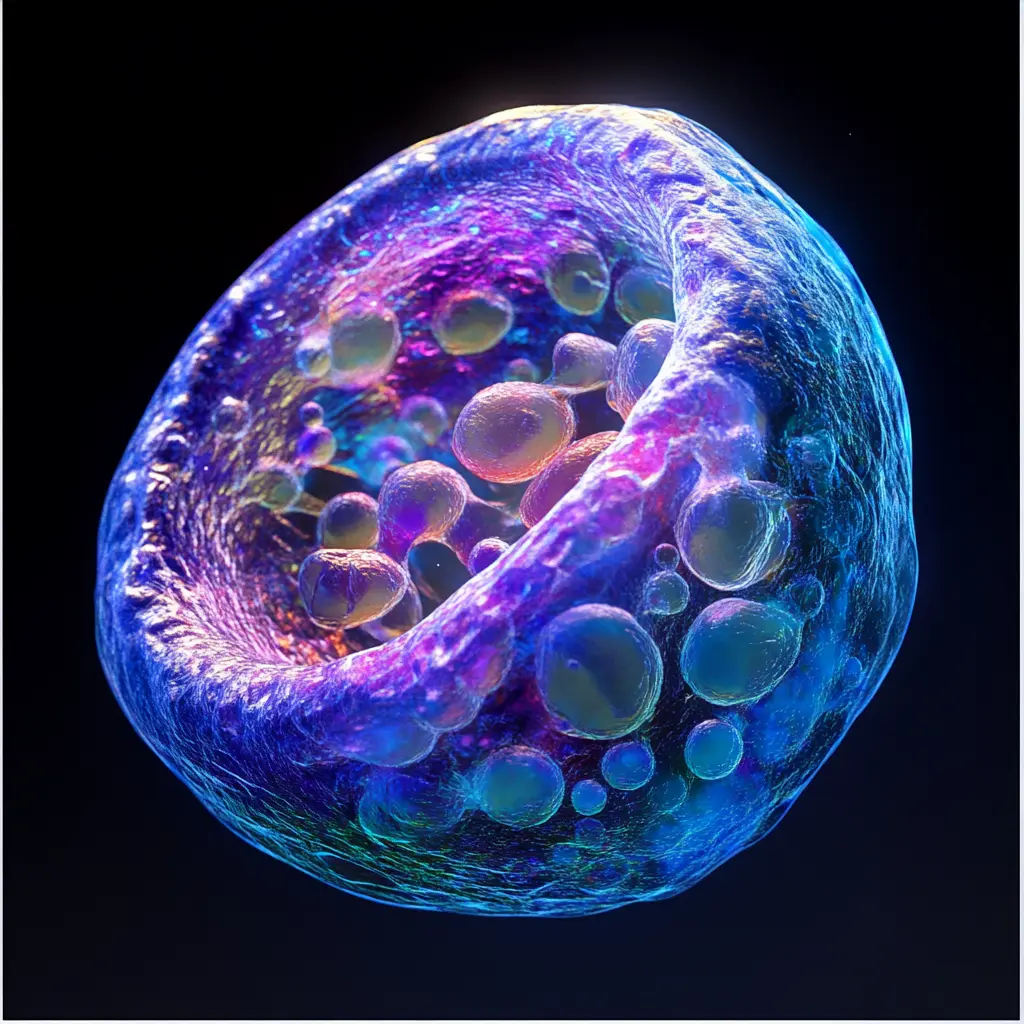
Why do some plants wilt in the heat while others stay firm? The answer lies in a vacuole, a storage organelle that controls water inside the cell. Just like a warehouse, it stores useful materials and removes waste. Without it, plant cells shrink, and waste builds up, affecting cell function.
This study guide explains the structure, types, and functions of vacuoles in plants, fungi, protists, and some animal cells. You’ll learn how vacuoles regulate water balance, store nutrients, and interact with other organelles to maintain a stable environment inside the cell.
Vacuole: Quick Summary
Need a Quick Summary? Here’s What You Should Know About Vacuoles:
🟠 Vacuoles are membrane-bound organelles found in plants, fungi, protists, and some animal cells, storing water, ions, and waste.
🟠 Plant vacuoles take up 30-90% of the cell’s volume and help maintain turgor pressure, which keeps the plant upright.
🟠 Animal vacuoles are smaller and assist with waste storage, transport, and digestion when combined with lysosomes.
🟠 Contractile vacuoles in freshwater protists remove excess water to prevent the cell from bursting.
🟠 Food vacuoles in protists store and digest food by fusing with lysosomes to break down nutrients.
🟠 Gas vacuoles help aquatic bacteria control buoyancy by adjusting their position in water.
🟠 Vacuoles influence food storage and plant defense, storing sulfur compounds in onions and garlic and pigments responsible for autumn leaf colors.
🟠 Industries use plant vacuole contents, such as pigments for dyes and alkaloids for medicines and perfumes.
What is a Vacuole?
A vacuole is a membrane-bound organelle found in plants, fungi, protists, and some animal and bacterial cells. It forms when small membrane vesicles fuse together. Unlike other organelles, it has no fixed shape and changes depending on the cell’s needs.
Vacuoles store water, ions, enzymes, and other molecules. In plants, they take up most of the cell’s volume and control water balance. In animals, they are smaller and help with waste storage and transport.
Differences Between Plant and Animal Vacuoles
| Feature | Plant Cells | Animal Cells |
| Size | Large, can occupy 30-90% of the cell | Small and numerous |
| Function | Stores water, nutrients, and waste; maintains pressure | Assists in waste storage and transport |
| Structure | Surrounded by tonoplast; contains cell sap | Similar but smaller, often temporary |
Vacuole Structure and Composition
A vacuole is surrounded by the tonoplast, a membrane that controls what enters and exits. It lets water pass freely while regulating ions, enzymes, and waste products.
Inside, the vacuole holds water, dissolved ions, enzymes, and stored molecules like sugars and pigments. These contents change depending on the cell type and function. In plants, pigments stored in vacuoles give flowers their color. Some plant vacuoles also store toxic compounds to protect against herbivores.
How Vacuoles Form and Change Over Time
Vacuoles form when small membrane vesicles fuse together. These vesicles originate from the endoplasmic reticulum and Golgi apparatus, which help package proteins and lipids needed for vacuole function. In young plant cells, multiple small vacuoles merge over time to create one large central vacuole.
The size and function of a vacuole can change depending on the cell’s conditions. In dry environments, plant vacuoles store extra water to prevent dehydration. In germinating seeds, vacuoles break down stored proteins into smaller molecules the seedling can use for energy. Some plant vacuoles also shift their chemical contents based on external factors. For example, certain flowers store colorless pigments that only develop into bright reds or purples when exposed to acidic conditions inside the vacuole.
In animal cells, vacuoles form during endocytosis, when the cell engulfs materials from its surroundings. These vacuoles are temporary and often merge with lysosomes, where enzymes break down the contents. In single-celled protists, contractile vacuoles adjust their activity based on water availability, working faster when excess water enters the cell.
Vacuoles are dynamic organelles, constantly changing their size and function to help the cell survive. Whether they are expanding, merging, or shifting their contents, vacuoles remain central to a cell’s ability to adapt to its environment.
Functions of the Vacuole
Vacuoles store materials, regulate water levels, and help cells grow. In plant cells, they also control pressure to keep the cell firm. Different types of vacuoles handle storage, waste removal, and chemical balance.
Storage and Waste Management
Vacuoles act like storage centers. They keep nutrients, ions, and waste products separate from the cytoplasm. This protects the cell from harmful substances and helps recycle molecules when needed.
What vacuoles store:
- Proteins in seeds that support germination.
- Pigments that give flowers and fruits their color.
- Alkaloids and toxins that protect plants from herbivores.
Some plant vacuoles store chemicals that become toxic when the cell is damaged. For example, onions and garlic release strong-smelling compounds that come from stored vacuolar contents when cut.
Water Balance and Turgor Pressure
Vacuoles regulate water inside plant cells. When a vacuole fills with water, it pushes outward against the cell wall, keeping the plant upright. This pressure is called turgor pressure.
If a plant loses water, vacuoles shrink, and cells become limp. This makes leaves wilt. When you water a wilted plant, its vacuoles refill, and the plant stands up again.
Cell Growth and pH Regulation
Vacuoles allow plant cells to grow quickly by taking in water. Instead of making more cytoplasm, the cell expands as the vacuole fills. This saves energy while increasing cell size.
Inside the vacuole, stored enzymes help break down molecules. These reactions need an acidic environment, so the vacuole pumps in hydrogen ions (H⁺) to lower the pH. This keeps stored enzymes active and helps the cell manage waste.
Types of Vacuoles
Vacuoles come in different forms depending on the organism. In plants, they store water and control cell pressure. In protists, they help with water balance and digestion. Some bacteria use vacuoles to regulate their position in water.
Central Vacuole (Plants)
The central vacuole is the largest organelle in plant cells, taking up 30-90% of the cell’s volume. It stores water, ions, pigments, and waste. By adjusting water levels, it maintains turgor pressure, which keeps the plant upright. When the vacuole loses water, the plant wilts. Some vacuoles store chemicals that deter herbivores, like bitter compounds in leaves.
Contractile Vacuole (Protists)
Freshwater protists, like Paramecium, use a contractile vacuole to remove excess water. Water constantly enters the cell due to osmosis. If it isn’t removed, the cell will burst. The contractile vacuole collects this water and then contracts, pushing it out through the membrane. This keeps the cells from swelling too much.
Food Vacuole (Protists)
Protists such as Amoeba form food vacuoles when they engulf food. The vacuole surrounds the food particle, trapping it inside. Lysosomes fuse with the vacuole and release enzymes that break the food down into nutrients. The cell absorbs what it needs, and waste is later expelled.
Gas Vacuoles (Bacteria)
Some aquatic bacteria have gas vacuoles that control their position in the water. These vacuoles contain small gas-filled compartments that help bacteria float or sink. By adjusting gas levels, bacteria move to the best depth for getting light or nutrients.
Vacuole and Other Organelles
The vacuole works with other organelles to move, store, and break down materials. It depends on the Golgi apparatus, lysosomes, and the endoplasmic reticulum to manage proteins, waste, and ions.
How the vacuole interacts with other organelles:
- Golgi apparatus – Delivers proteins and enzymes to the vacuole. These proteins may be stored, broken down, or used for chemical reactions inside the vacuole. In plant cells, the Golgi helps process sugars before they enter the vacuole.
- Lysosomes – Fuse with food vacuoles in protists and animal cells to release digestive enzymes. This breaks down food particles and unwanted molecules so the cell can use or remove them.
- Endoplasmic reticulum (ER) – Moves calcium and other ions into the vacuole. This helps control the chemical balance inside the cell and allows the vacuole to maintain the right internal conditions.
In plant cells, the large vacuole pushes against other organelles, keeping them near the cell membrane. This helps chloroplasts stay in the best position to capture light for photosynthesis. In animal cells, small vacuoles work with lysosomes to manage waste and digestion.
Without these interactions, the vacuole wouldn’t function properly. It depends on other organelles just as they rely on it to keep the cell running efficiently.
Vacuole in Everyday Life
Vacuoles affect the way plants store food, defend themselves, and change color. The compounds inside them influence the taste, smell, and appearance of many plants used in food and industry.
How Vacuoles Affect Food Storage
Vacuoles store sugars, water, and defense chemicals. In garlic and onions, they hold sulfur compounds. When you cut these vegetables, vacuoles break open, and the stored chemicals react with enzymes. This reaction releases a strong smell that protects the plant from herbivores.
Why Leaves Change Color in Autumn
During fall, trees stop producing chlorophyll, the pigment that makes leaves green. As chlorophyll breaks down, vacuoles release stored pigments like carotenoids (yellow-orange) and anthocyanins (red-purple). This is why leaves turn bright colors before they fall.
Industrial Uses of Vacuoles
Many plants store pigments, alkaloids, and resins in vacuoles. These substances are used in medicines, dyes, and perfumes. For example, vacuoles in indigo plants store precursors to blue dye, while certain flowers contain pigments used in cosmetics.
Struggling with Vacuoles? A Private Tutor Can Help
Vacuoles might seem simple at first—they store water, nutrients, and waste. But when you start looking at turgor pressure, cell growth, and storage functions, things can get confusing fast. If you’re feeling stuck, a private biology tutor can help break it down in a way that makes sense.
With “tutoring chemistry Birmingham” or “biology lessons Manchester,” you can get personalized help that fits your pace. Maybe you need to understand why a plant wilts when its vacuoles lose water or how food vacuoles work in protists. One-on-one tutoring makes it easier to ask questions and actually get answers that help.
If you’re curious, try looking at a plant cell under a microscope. Seeing vacuoles in action beats memorizing facts any day. Need help with exam prep or just want things explained more clearly? Find a “biology tutor Sheffield” today and start making sense of vacuoles—without the stress. Book your session on meet’n’learn today.
Looking for more resources? Check out our Biology blogs for additional learning material. If you’re ready for extra help, a tutor can guide you through the most challenging topics with clarity and patience.
Vacuole: Frequently Asked Questions
1. What is a vacuole?
A vacuole is a membrane-bound organelle that stores water, ions, enzymes, and waste in plant, fungal, protist, and some animal cells.
2. How does a vacuole help plant cells?
A vacuole maintains water balance, supports cell structure by creating turgor pressure, and stores nutrients and waste.
3. Do animal cells have vacuoles?
Yes, but animal vacuoles are smaller and mainly assist with waste storage, transport, and digestion.
4. What is the difference between a plant vacuole and an animal vacuole?
Plant vacuoles are large and regulate water and storage, while animal vacuoles are smaller and function mainly in waste removal.
5. What does a contractile vacuole do?
A contractile vacuole removes excess water from freshwater protists to prevent the cell from bursting.
6. How do food vacuoles work in protists?
Food vacuoles store and digest food by fusing with lysosomes, which release enzymes to break down nutrients.
7. Why do vacuoles store pigments in plants?
Vacuoles store pigments like anthocyanins and carotenoids, which give flowers, fruits, and leaves their color.
8. How do vacuoles affect everyday foods?
Vacuoles in onions and garlic store sulfur compounds that release strong odors when the cell is cut.
Sources:
1. BSCB
2. Britannica
3. Wikipedia
